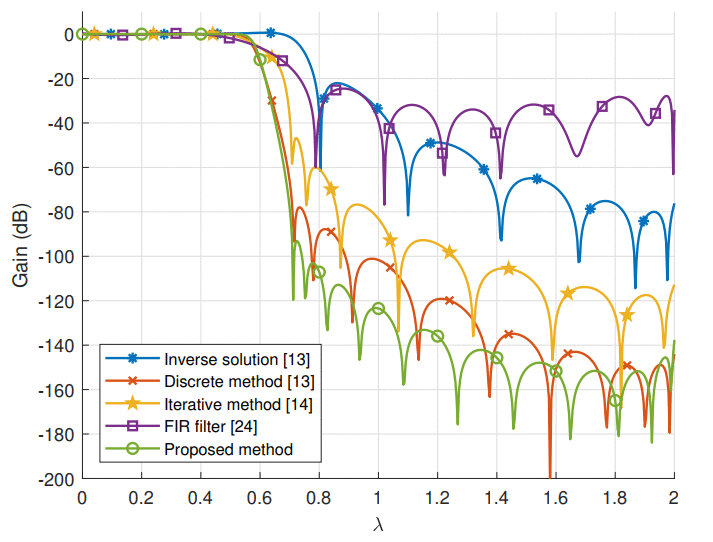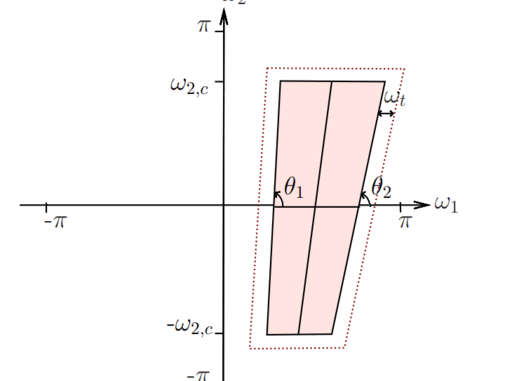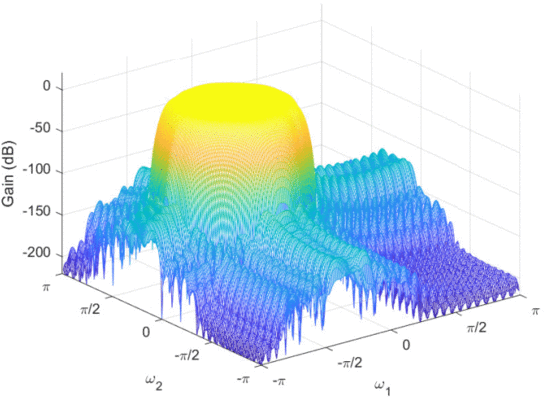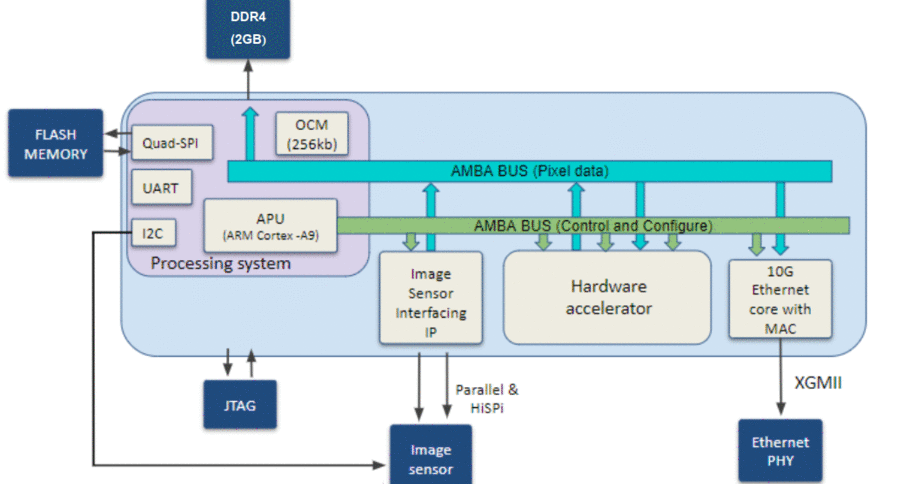
Minimax Design of FIR and ARMA Graph Filters Using Convex Programming
Darukeesan Pakiyarajah, Chamira U. S. Edussooriya | Ongoing
This is an ongoing research. This research primarily focuses on adopting convex programming techniques for designing graph filters optimal in minimax sense. The primary challenge in optimization techniques used for graph filter design is the susceptibility to numerical instability. We are analyzing the suitability of different polynomial bases (eg: shifted-polynomial basis, Chebyshev polynomial basis) to enhance the numerical stability. Furthermore, we are trying to incorporate the constraints for stability in the design of ARMA filters.

WLS Design of ARMA Graph Filters Using Iterative Second-Order Cone Programming
Darukeesan Pakiyarajah, Chamira U. S. Edussooriya | 2021
A weighted least-square (WLS) method is proposed to design autoregressive moving average (ARMA) graph filters. First, the WLS design problem is expressed as a numerically stable optimization problem using Chebyshev polynomial bases. Then, the optimization problem is formulated with a non-convex objective function and linear constraints for stability. A relaxation technique is employed to convert the non-convex optimization problem into an iterative second-order cone programming problem. Experimental results confirm that ARMA graph filters designed using the proposed WLSmethod have significantly improved frequency response compared to those designed using previously proposed WLS design methods.

Weighted Least-Squares Design of 2-D IIR Filters with Arbitrary Frequency Response using Iterative Second-Order Cone Programming
Darukeesan Pakiyarajah, Nadeeshan Dissanayake, Chamira U. S. Edussooriya, Chamith Wijenayake, Arjuna Madanayake | 2021
2-D IIR filter design is a challenging problem due to the difficulty in verifying stability. Optimization methods proposed so far predominantly consider the design of 2-D IIR filters having quadrantally-symmetric frequency responses, where the transfer functions have separable denominators. In this research, a WLS design method for 2-D IIR filters having arbitrary frequency response and stable in the P-BIBO sense is proposed. Proposed method considers transfer functions with nonseparable numerators and denominators having complex- and real-valued coefficients, respectively. The WLS design is formulated as an iterative second-order cone programming problem, which includes constraints to guarantee the P-BIBO stability. Design examples confirm that the proposed WLS method leads to P-BIBO stable 2-D IIR filters.
* Publication is accepted for ISCAS 2022

Minimax Design of M-D Sparse FIR Filters with Arbitrary Frequency Response using SOCP
Ashira L. Jayaweera, Darukeesan Pakiyarajah, Chamira U. S. Edussooriya | 2021
The number of coefficients of M-D FIR filters increases exponentially with the number of dimensions leading to significantly high computational complexities. A minimax design method for M-D FIR filters having sparse coefficients is proposed, therefore, having low computational complexities. Design of M-D FIR filters with arbitrary frequency responses and low group delays of which the coefficients are complex valued is considered. The minimax design is formulated as a second-order cone programming problem. Design examples confirm that M-D sparse FIR filters designed using the proposed method provide more than 60% reduction in the computational complexity for a similar error in the frequency response approximation compared to M-D FIR nonsparse filters designed using previously proposed minimax methods.
* Publication is accepted for ISCAS 2022

WLS Design of M-D Complex-Coefficient FIR Filters with Low Group Delay using Second-Order Cone Programming
Darukeesan Pakiyarajah, Sakila S. Jayaweera, Chamira U. S. Edussooriya, Chamith Wijenayake, Arjuna Madanayake | 2020
A weighted least-squares (WLS) design method is proposed for the design of multi-dimensional (M-D) complex-coefficient finite-extent impulse response (FIR) filters. We consider the general form of M-D FIR filters having arbitrary frequency responses and low group delays. The proposed WLS design is formulated as a second-order cone programming problem. Design examples confirm that the proposed method provides the state-of-the-art M-D FIR filter designs with almost constant group delay.

A Low-Complexity 2-D FIR Parallelogram Filter for Broadband Beamforming with Sparse Linear Arrays (Undergraduate Research Project)
Darukeesan Pakiyarajah, Chamira U. S. Edussooriya | 2019-2020
A low-complexity 2-D FIR filter having a parallelogram-shaped passband is proposed for broadband beam-forming. The filter design is formulated as a parallel combination of two 2-D filters denoted as the prototype filter and the masking filter. The prototype filter has spatially upsampled coefficients and is connected to a sparse linear array. The prototype and masking filters are designed in a minimax sense with linear phase responses using linear programming. The simulation results confirm that the proposed filter provides a considerable saving in the number of antennas and the radio frequency components with a slight degradation in the fidelity of enhanced broadband plane waves distorted by strong radio frequency interference and noise signals.

Intelligent Camera (Final Year Project)
Darukeesan Pakiyarajah, N.T.Hewage, M.T.C.Jaliya, Nanthakumar Pathmapiriyan, Ashokumar Thiruventhan, Ajith Pasqual, Jayathu Samarawickrama | 2019-2020
The primary objective of this project is to make a camera development platform that can capture a video, process the video, perform video encoding, and send the data over the network. The camera platform has reconfigurable hardware (FPGA) based architecture, support different frame rates up to 60fps and resolution up to 1080p. The camera platform also supports different operating modes so that it can function either as a regular camera or an intelligent camera. The video capturing and processing was demonstrated using ZedBoard (Xilinx Zynq®-7000 SoC). The entire hardware design of the intelligent camera was submitted as a part of the deliverables. Paraqum Technologies financially supported this project.